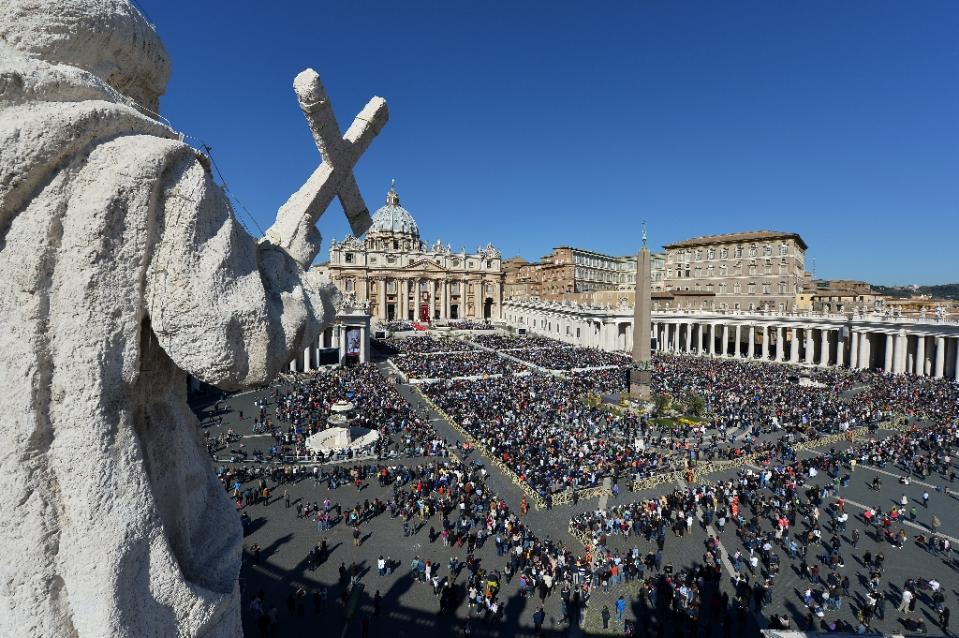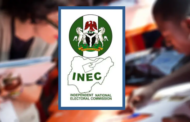Two new books are deepening a Vatican scandal with tales of mismanagement and greed, such as sainthood causes that can cost up to a half-million dollars and a monsignor allegedly breaking down the wall of his next-door neighbor — a sick, elderly priest — to expand his already palatial apartment.
Pope Francis has made it a top priority to reform the Vatican bureaucracy known as the Curia, a hive of intrigue and gossip. He appointed a commission of eight experts in 2013 to gather information and make recommendations after an earlier expose helped drive his predecessor, Pope Benedict XVI, to a historic resignation.
The leaks in the new books are seen as part of a bitter internal struggle between the reformers and the old guard. This week, the Vatican arrested two former members of the commission in an investigation into stolen documents.
A new book by journalist Gianluigi Nuzzi makes some startling allegations, including a report that Vatican “postulators” — officials who promote sainthood causes — bring in hundreds of thousands of euros in donations for their causes but are subject to no oversight as to how the money is spent.
In his book “Merchants in the Temple,” obtained Tuesday by The Associated Press two days ahead of publication, Nuzzi estimates the average price tag for a beatification cause at around 500,000 euros ($550,000) — and some have gone as high as 750,000 euros ($822,000). Causes of saintly candidates who don’t inspire rich donors can languish.
He also recounts a tale involving Monsignor Giuseppe Sciacca, a top official in the Vatican City State administration, who in 2012 apparently wanted a fancier apartment. When Sciacca’s neighbor was hospitalized for a long period, Nuzzi writes, the cardinal took advantage, broke down a wall separating their residences and incorporated an extra room into his apartment, furniture and all.
The elderly priest eventually came home to find his possessions in boxes. He died a short time later, the book says.
Francis, who lives in a hotel room, summarily demoted Sciacca and forced him to move out.
A second book by Emiliano Fittipaldi, a reporter for the L’Espresso newsmagazine also obtained by the AP on Tuesday, details financial wrongdoing at the Vatican, citing reports by independent auditors.
“Avarice,” also due out Thursday, claims a foundation set up to support a children’s hospital paid 200,000 euros toward the renovation of the apartment of the Vatican’s No. 2 at the time, Tarciso Bertone. Bertone came under fire last year over the apartment, described in the book as a “mega-penthouse,” which sat ill with Francis’ vision of a “poor church.”
Bertone has said he paid for the renovations himself.
Fittipaldi also said nearly 400,000 euros donated in 2013 by churches worldwide to help the poor wound up in an off-the-books Vatican account.
The Vatican described the books as “fruit of a grave betrayal of the trust given by the pope, and, as far as the authors go, of an operation to take advantage of a gravely illicit act of handing over confidential documentation.”
“Publications of this nature do not help in any way to establish clarity and truth, but rather generate confusion and partial and tendentious conclusions,” the Vatican said in a statement.
The books, and this week’s arrests, mark a new phase in the “Vatileaks” scandal. The saga began in 2012 with an earlier Nuzzi expose, peaked with the conviction of Benedict’s butler on charges he supplied Nuzzi with stolen documents, and ended a year later when a clearly exhausted Benedict resigned.
Nuzzi’s new book is written from the perspective of the reform commission, whose archives were supposed to remain top secret. It focuses on the resistance the commission encountered in getting information out of Vatican departments that have long enjoyed near-complete autonomy in budgeting, hiring and spending.
“Holy Father, … There is a complete absence of transparency in the bookkeeping both of the Holy See and the Governorate,” five international auditors wrote Francis in June 2013, according to Nuzzi’s book. “Costs are out of control.”
The book says one of the commission’s priorities was getting a handle on the Vatican’s vast real estate holdings. Nuzzi cites a commission report which found that the value of the real estate was some 2.7 billion euros (about $3 billion), seven times higher than the amount entered on the balance sheets.
Rents were sometimes 30 to 100 percent below market, the commission found, including apartments given free to cardinals and bureaucrats as part of their compensation or retirement packages.
The book says if market rates were applied, employees’ homes would generate rental income of 19.4 million euros rather than 6.2 million euros, while other “institutional” buildings that today generate no income would bring in 30.4 million euros.
___
Follow Nicole Winfield at www.twitter.com/nwinfield

















